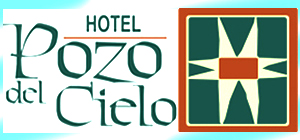PERU TOUR PACKAGES
- 4x4 Rental & Tours In Peru
- Private Ground Transportations In Peru
- DAY TRIP FROM CUSCO TO PUNO with stop at NEW Pallay Punchu Rainbow Mountain
- 2 DAYS PRIVATE SHUTTLE FROM CUZCO TO PUNO THOUGH MOUNTAINS
- Peru Self Driving Cars
- 4WD Exclusive Private Transfer From Arequipa To Puno
- Day Tour To Reserva De Salinas Y Aguada Blanca
- One Day Arequipa Off-Roading Tour
- Half Day Sandboarding Tour In Arequipa
- 3 Day Of Adventure Tours In Arequipa
- Full Day Sandboard Tour From Lima
- Lima Paracas Ballestas Ica Wineyards Huacachina Nazca Llines In 2 Days
- 6 DAYS COLCA CANYON ADVENTURE TOUR Rock Climbing - Biking - Horse Riding - Hiking & Camping
- Cusco Traditional Tour And Inti Raymi Festival
- Lima Cusco And Machu Picchu 3 Days
- Cusco Sacred Valley And 2 Days Inca Trail Trek To Machu Picchu
- Tour To Amazon Rainforest And Machu Picchu In 6 Days
- Cusco And Classic 4 Days Inca Trail Trek To Machu Picchu In 7 Days
- Jungle Tour - White Water Rafting And Lares Trek To Machupicchu - 14 Days
- Lima Amazon Jungle Cuzco And Machu Picchu Tour - 7 Days
- Tours to Nazca From Lima 2 Days
- Full Day Flight Nazca Lines From/to Pisco
- Lima Paracas Nasca Tour 3 Days
- Lima Cusco And Arequipa Tour 8 Days
- Full Day Nasca Lines By Luxury Public Bus
- Overflight Nazca Line From Lima By Aircraft Travel - Full Day Guided Tours
- Nasca Line From Lima By Land & Aircraft Travel - Full Day Guided Tours
- Daily Flights Over The Nazca Lines From Ica - Half Day Tour
- Sandboard And Sand Buggy In Peru 5 Days
- NEW Sandboarding Tour In Arequipa - Full Day Guided Excursion
- Cusco Complete Tour 5 Days
- Cusco And Puno Tour 7 Days
- Cuzco Colca Canyon Arequipa - 4WD Guided Tour 2 Days
- NEW 4X4 Expedition From Cuzco To Colca Valley And Arequipa 3 Days
- NEW Arequipa Colca Canyon Puno Guided Tour In 2 Days
- Arequipa And Puno Tour 6 Days
- 4x4 Tour Arequipa - Colca Canyon - Cusco 3 Days
- NEW Puno Colca Canyon Arequipa Guided Tour In 2 Days
- Peru Classic Tour 14 Days
- Peru Classic Tour And Inka Trail To Machu Picchu 14 Days
- Peru Luxury Tours 7 Days
- Peru Adventure Tour 24 Days
- Peru Jungle Tour
- Peru Bike Tours 14 Days
- Peru Mountain Biking 25 Days
- Peru Mountain Climbing
- Peru Off Road Tour
- Peru Royal Tour 8 Days
- Peru Trekking 25 Days
- Peru South Coast Tour 7 Days
- Peru Motorcycle Tour 21 Days
- Puno Colca Canyon And Arequipa Tour 3 Days
- Puno Colca Canyon Puno 2 Days
- Puno Colca Canyon Puno 3 Days
GENERAL INFORMATION OF DEPARTMENT OF AMAZONAS PERU
FAST FACT AND ORIENTATION OF AMAZONAS
Country: PeruRegion: Amazonas
Founded: As a department on November 21, 1832
Location: North-east of Peru
Status: Department
Elevation: 2334 meters above sea level.
Population: 375.993inhabitants.
Language: Spanish, Quechua, Aguaruna and Huambisa.
Local Currency: Peruvian Nuevo Sol (PEN).
Arrival: By bus service and airplanes.
HISTORY ABOUT AMAZONAS
Around the tenth century A.D. developed the present territoryof the department of Amazonas Chachapoyas culture most recognized manifestation of which is the impressive fortress of Kuelap.Although human presence in the region dates from; 7000 BC,are undoubtedly the construction of the Chachapoyas, which constitute the most representative monuments of local history. Architecturally dominated by circular constructions and walls decorated with friezes ornithomorphic. The mummies of the Lagoon of the Condors and the sarcophagus nestled in the cliffs such as Karajía are an example of the importance of thecult of the dead.
In the early years of Spanish colonization, Alonso de Alvarado founded the city of; San Juan de la Frontera of Chachapoyas (February 5, 1538) since become a very important point in the Marañón River region and income the jungle.
In the years of independence, decided to support the cause Chachapoyanos emancipation and removed from office the deputy of the Spanish Empire and the bishop of Maynas. This generated a quick response which was crystallized in the battle of Figs Urco (June 6, 1821) with the victory of the patriots.
The department of Amazonas was created by the government of Agustín Gamarra in 1832. Later, in 1866,when creating the department of Loreto, lost much of its original territory.
Currently, the Utcubamba River Valley has the largest number of people in the department and the main productive activities among which, agriculture.
CHACHAPOYAS
Capital of the department of Amazonas is one of Peru's oldest cities and one of the few that still maintains its noble air and Spanish influence. A land of orchids, sugar cane and coffee, cock fights and exquisite food.Its name comes from the native word Chachapoyacuno, which means "forest or mountain of mist". The large colonial mansions in the city, with their tiled roofs, ample patios and unique balconies; surrounded by orchards and gardens, provide evidence of the Spanish presence.
In the cities surrounding areas and in nearby provinces, there are many important archeological monuments built by the Sachapuyo (or chachapoyas). This civilization's imposing citadels were built on the summits of the mountains in order to make maximum use of the land for cultivation.
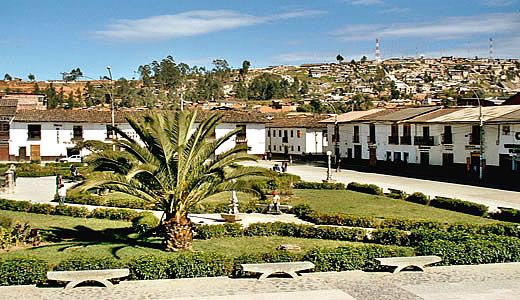
FESTIVALS AND EVENTS
Highlight the dances of the area, as Chumaichada (dance townsman), dance Levanto, the Ancashkenken, braids, the Chuquiac, the dance of Carnival Chachapoyas and arm dance.Carnival Chachapoyano (Feb-Mar): Mixture of customs and Chachapoyanos Celendín. It is celebrated with the planting of "Humishas" large trees that are decorated with balloons, streamers, clothes and other objects, also performed a competition of floats, the choice of Carnival queens, social and popular dance, water play, streamers and colors.
Chachapoyas Tourism Week (Jun): Recreational, social and cultural rights. Highlights the Raymillacta of Chachapoyas, where communities of the region meet its dancers to showcase the best of their folklore.
Feast of the Lord of Gualamita (Sep): Marks the Hatun Luya that brings together people of surrounding towns, will be demonstrations of ancient customs.Throughout the celebration there is music and dances of the region.
GASTRONOMY - TYPICAL DISHES OF AMAZONAS
Purtumute: boiled beans with mote (boiled corn kernels and cilantro or coriander).Cuy with potatoes: cooked guinea pig, seasoned and fried, served with potatoes and stew roasted peanuts, served with chopped onions and peppers.
Juanes de Yucca: boiled cassava grated, mixed with rice and chicken or corned beef, wrapped in canna leaf and steamed.
Cecina: beef or pork dry and salty.
Tamales: corn dough filled with meat, wrapped in leaves and baked achira vapor.
Humitas: corn dough filled with meat or cheese dressing, wrapped in sheets corn and steamed.
TRADITIONAL DRINKS
Guarapo: drink the juice of sugar cane, boiled and then fermented.Chuchuhuasi: spirits made from a bitter root of the same name very popular throughout the eastern Peru and found only in the province of Condorcanqui.
MAIN TOURIST ATRACCTIONS AROUND AMAZONAS
FORTRESS OF KUÉLAPIt is a majestic Chachapoya architectural work located in the upper part of the Utcubamba River Valley, nearby the hamlet of Kuélap, Province of Luya, in the Department of Amazonas, at an altitude of 3000 m.a.s.l. The fortress of Kuélap was built and inhabited by the Chachapoyas, between 1000 and 1400 a.D. called "The Fortress" and built on top of a high mountain, it is Peru´s mountainous jungle´s most important archaeological complex which presents itself to visitors, like an unconquerable place, surrounded by cliffs and precipices, on three of its four sides.
The Archaeological Complex of Kuélap is composed of two gigantic superposed artificial platforms, on top of which was erected a metropolis occupying an approximate surface of 450 hectares.
The contention walls that form the above mentioned platforms, give the impression of gigantic fortified walls, protecting that site, as they reach up to thirty meters high, in some stretches. Furthermore, that impression is strengthened by the presence of architectural elements identified as watch posts.
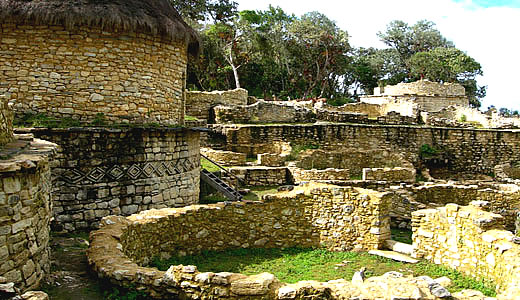
SARCOPHAGUSES OF KARAJIA
Karajía's Sarcophaguses date back between 1100 and 1300 A.D. they belong to the Chachapoya culture and are inside the Archaeological Complex of Chipuric. These are pre-Incan tombs erected at the top of a precipice, which are 2 meters high and are shaped in mud and decorated with geometric designs. Thus, they are an original form of burials, as they are located on cliffs and appear in groups of 4 to 8, laterally united and reclined, with their backs against the cave´s rock. It is interesting to note that the sarcophaguses are composed of two parts: The head and bust carved in mud and decorated with geometric designs. These sarcophaguses are also called "Purumachos".
REVASH'S MAUSOLEA
These are 1 or 2 floor rectangular-shaped funerary "chullpas" with double-slanted roofs, located in a place called Ingenio. They are built on inaccessible cliffs, in caves excavated in the rocky walls of out-jutting rocks and imposing precipices, and their walls are built with stones and gravel united by clayish mud cement, with red ocre colored animal shapes, and they have no front door access. Revash's mausoleum were collective sepultures, as show the residues of bones they still contain and it is estimated that their construction dates back between 1100 and 1300 a.D., and belongs to the Chachapoya culture.
SARCOPHAGUSES OF THE CONDORS´ LAGOON
Located on the high rocks over The Condor´s Lagoon´s shores, in the District of Leymebamba, these mausoleum might have belonged to the high chiefs and caciques of the Chachapoya culture which was dominated by the Incas who even instored their chieftainship (Apu Chuillaxa, first Incan Chief; 1475 -1490), in the village of Leymebamba.
The place is of fascinating beauty, due to the lagoon and the mausoleum's mystery, as well as because of the typical gastronomy based on trout and delicious curd.
SARCOPHAGUSES OF CHIPURIC
It is a funerary complex of the Chachapoya culture, from the late intermediate period (900 a.D -1450 a.D.), associated to the Chipuric style which, along with that of Revash, constitutes one of the main funerary complexes of that culture. Funerary statues stand out that were deposited on hardly accessible cliffs and made in the following manner: In the statue´s center, there is the body wrapped in an animal´s skin or cotton blankets and placed in a net of ropes. This funerary bundle is covered with a thick coat of clay and pebble stones sustained inside it, by a cone-shaped frame made with four sticks united above the defunct´s head. Thus, the "package" has a conic or cilyndrical shape, and the height of the bundles is of 1.30 to 1.60 meters.
GOCTA'S CATARACT
It is located nearby the Peruvian hamlets of Cocachimba and San Pablo, District of Valera, Province of Bongará and Department of Amazonas. The cataract is situated at a distance of five hours of hiking along an extensive valley of virgin cloud forest, from the hamlet of Cocachimba, in the surroundings of which, one can appreciate a total of 22 waterfalls, some of which are of impressive beauty, especially during the rainy season.
Gocta´s Cataract, locally known as "La Chorrera", is a 771 meter high straight waterfall, and for a long time, it was considered as the world´s third highest cataract.
ARCHAEOLOGICAL COMPLEX OF MACRO
It is a pre-Incan habitational compound that dates back between 1100 and 1300 a.D. and is located on the South-west slope of a steep rocky spur. Inside it, there are five platforms that support huts and towers built with stones and mud cement, on an area of three hectares.
There are several platforms and foundations of houses decorated with rhomboidal friezes and niches in the walls. It is calculated that it sheltered about 100 people, at the time the Chachapoya culture flourished.
ARCHAEOLOGICAL COMPLEX OF YALAPE
It is located 21 km. south of the city of Chachapoyas, at an altitude of 2700 m.a.s.l. and a 40 minute journey by car. It was inhabited by members of the Chachapoya culture, between 1100 and 1300 a.D. Its stone buildings present circular constructions decorated with high-relief friezes, in the shapes of rhombus and zigzags.
ARCHAEOLOGICAL COMPLEX OF MACHUPIRCA
It is a pre-Incan funerary site, with stone constructions, located at the entrance of the Shihual Cave, and which belonged to the Chachapoya culture. To get to the place, one can hike from the city of Chachapoyas or the villages of Tingo and Magdalena.
ARCHAEOLOGICAL COMPLEX OF COLLACRUZ
It is an archaeological compound in which one can observe circular living quarters of different sizes, around a "cancha" or square. Its architecture is of Shachapuyo Incan origin and it might have been a small inhabited center.
ARCHAEOLOGICAL COMPLEX OF LA PIRQUILLA
It is a circular-shaped stone and mud architectural compound of living quarters, with circular shapes, located on the way to the Huaylla Belén Valley.
VILLAGE OF THE DEAD
It is a place dedicated to the worship of mummies of high rulers of the Chachapoya culture, and their decorated, round and square funerary statues and sarcophaguses are set on a surface of one hectare. This compound belonged to the pre-Incan Chachapoya culture which dates from 1100 to 1350 a.D., and is located in a place of difficult access.
LEYMEBAMBA'S MUSEUM (Mallqui Center)
Leymebamba's museum, inaugurated in June 2000, has three exhibition halls, with archaeological objects, that shelter the material recuperated from the area of The Condors´ Lagoon, which consists of more than 200 mummies and archaeological pieces, such as decorated gourds, ceramics, bamboo recipients, woven bags, ear pendants, wooden combs, cotton capes, khipus and others. In the second hall, an ethnographic exhibition was implemented, in which are presented the different expressions of the way of life of the human societies that, presently live on the ancient Chachapoyas´ territory, and the third hall is destined to promote scientific and cultural diffusion activities.
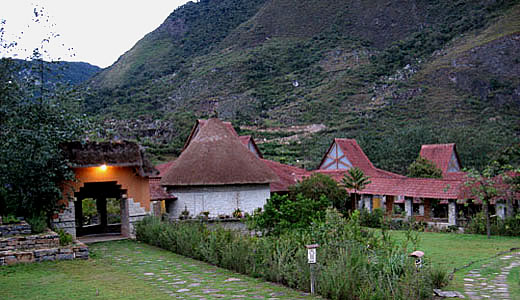
THE HIDDEN PEARL
The cattle-breeding country estate "La Perla Escondida", belonging to the Ullilén Portal family, is located South-east of Leymebamba, on the Oriental flank of the Yasgolga Cordillera. As a result of the colonization of the jungle's edge, it is a very productive cattle-breeding and agricultural area. Nearby, there is The Condors´ Lagoon, where the sarcophagusses of the Chachapoya chiefs were discovered; a fact that still makes the news in the world.
THE GRAN VILAYA VALLEY
This valley is situated west of the Kuélap Fortress, and shelters archaeological remains, such as La Pirquilla, Paxamarca, Peña Banca, Los Getones and Lanche, among others. Given its extension, it is calculated that there are nearly 5,000 constructions, between circular and rectangular ones, built in limestone, with ornamentation. The journey is full of adventure and starts in the Belén Valley, crossing the cloud forest, with abundant flora and fauna, and ends with the visit of Kuélap's Fortress.
THE AMAZON RIVER
The nomination of the Amazon River - Rainforest as Natural Wonder of the World in Cuenca, as well as Peru includes the countries of Bolivia, Brazil, Colombia, Ecuador, French Guyana, Guyana, and Venezuela Suriman receive the certification for New Foundation 7 Wonders of Nature, in 2012, according to the official communication sent by Bernard Weber, President of the international organization. In this regard, it is important that the website can be read N7W following.
"The Amazon Rainforest, also known as Amazonia, the Amazon jungle or the Amazon Basin covers 7,000,000 square kilometers (1,700 million acres), though the forest itself occupies some 5.5 million km² (1,400 million acres) and occupies 9 countries. The Amazon represents over half of the remaining tropical rain forests on the planet and contains the largest systems of rainforest in the world and the richest in species. The Amazon Rainforest is developed around the Amazon River and its watershed. The high temperatures of the "lungs of the planet" promote the development of an exuberant biodiversity. The Amazon River is the largest in the world by volume, with a total flow greater than the top ten world's rivers combined. Represents approximately one fifth of the flow of rivers in the world and is the largest river in the world. The Amazon River, with its 6,800 km is the longest river, the largest river and the basin has the largest area of our planet. No bridge crosses it.
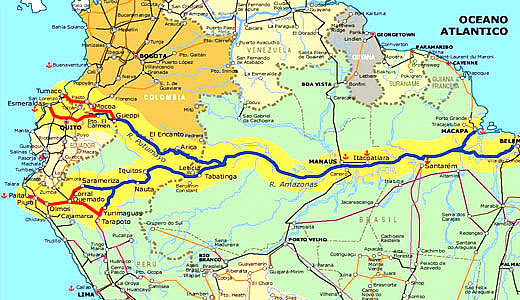
CONTACT US
For more information about the tour or you request a new date to departure for this tour, please contact us.... Some of our clients e-mail us saying our confirmation e-mails are placed to their spam folder rather than their inbox. We recommend to modify your JUNK or SPAM FILTER SETTINGS to receive our e-mails peruadventurestours@hotmail.com on the correct inbox. You may also want to add this email address to your list of known contacts. This will prevent our responses from being filtered into your Junk or Spam mail folder.
References Of Travel Guide Books To Peru
ADDITIONAL BOOKING SERVICES
- Camping Zone In Arequipa
- Bus Tickets All Over Peru
- Guided Tour Bus From Cusco To Puno
- Bus Transfer From Arequipa To Puno
- Bus Transfer From Colca Canyon To Puno
- Bus Transfer From Puno To Arequipa
- Airplane Tickets In Peru
- Railway Tickets In Peru
- Learn Spanish In Peru
- Rent A Car In Peru
- Rental Camping Gear In Peru
- Work In Peru
- Donation Program
PERU TRAVEL INFORMATION
- Embassies And Consulates In Peru
- Information Of South American Camelids
- Tips To Travel Around Peru
- Peru Adventure Magazine
- History Of The Incas And Tawantinsuyo Territory
- Inti Raymi Celebration In Cusco - The Festival Of The Sun God
- Travel Insurance To Peru
- Peruvian Government Taxes
- Travel Agent
PERUVIAN GASTRONOMY INFORMATION
- Peruvian Food
- History Of The Peruvian Cuisine
- Inca Cuisine
- Cuisine Of The Central Coast Of Peru
- Cuisine Of The Northen Coast Of Peru
- Cuisine Of The Andes Of Peru
- Cuisine Of Peruvian Jungle
- Art Culinary Of Arequipa
- Desserts And Sweets Dishes Of Peru
- Peruvian Recipes
- Peru Gastronomic Festivals
- Cultivation Of Ancient Plants Of Peru
- Coca Leaf






